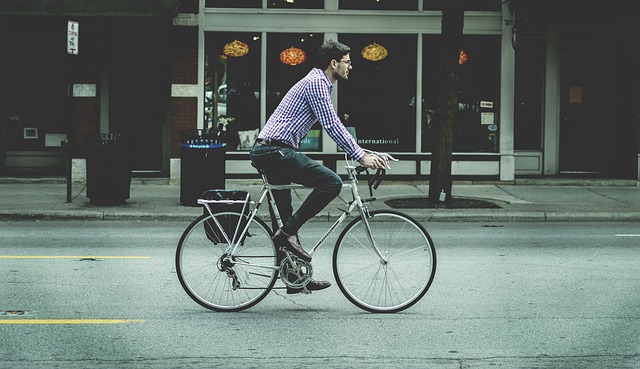Should i really ride my bike to work to stay fit?
Are cyclists more affected by pollution than people who commute by car? Although cycling is considered healthier than driving, people who ride a bike within a city can be exposed to a significantly higher amount of pollutants than people who commute to work by car. This year, the Fort Collins Commuter Study has published the first set of results of their study on the exposure to pollutants while commuting to work in different ways. 7 Yoga Postures to Keep you Chakras cleansed
The participants were 45 healthy, non-smoking workers who resided in Fort Collins and commuted to work every day, either by bicycle or by car. They were equipped with a GPS and a monitoring device in order to track both their route and their exposure to air pollution.
A similar study was also conducted in Montreal by McGill’s Department of Civil Engineering, finding that even considering the lower levels of pollution usually found in Canadian cities, cyclists were still at risk of inhaling soot and other pollutants.
How does their exposure vary?
The level of exposure varied significantly by pollutant: it was found that, on average, drivers were more exposed to carbon monoxide and gaseous pollutants, while cyclists were more exposed to particulates like black carbon.
Also, since cyclists usually breath harder, they inhaled a higher amount of pollutants than the one detected by the monitoring device; their exposure was two or even three times higher than it would have been if they had, for example, walked to work.
The exposure also varied depending on the route: Fort Collins has many bicycle lanes, but they are usually located right next to car lanes; while they are helpful in promoting exercise and in keeping cyclists safe, they also expose them to the many pollutants emitted by cars and other vehicles.

Another study conducted in London, for example, showed that cyclists’ had, on average, two or three times the amount of black carbon in their lungs compared to people who did not bike within the city: the presence of black carbon in the lungs can be associated with an increased risk of heart attacks and reduced lung functions. While it is still unclear whether the benefits of cycling can offset the risks caused by black carbon, this is surely a result that needs to be taken into consideration.
Does changing routes help?
It was suggested that cyclists could lower their particulate exposure by taking alternative routes that were farther from the city centers, so data from these alternate routes were also analyzed. It was found that cyclists who took these paths managed to reduce their mean particulate exposure, but since these routes were also longer, their cumulative particulate exposure was significantly higher than if they hadn’t taken the alternate route.
During this part of the study, the alternate routes that were analyzed were still within the city, but it was not always possible for participants to take them. The next part of the study will concentrate on studying off-road paths and their effect on cyclists’ exposure.

How can we lower cyclists’ exposure to air pollution?
Our environment is still very car-centric; in some areas, cars are responsible for more than one third or even half of the air pollution; thus, one of the firsts step in reducing cyclists exposure to air pollution has to be to reduce air pollution. This can be done by promoting public transport, making it easier for people to move within the city without using a car, and by giving incentives to people who walk, bike or take the bus to work.ride my bike.
The location of bicycle lanes also matter: by building them farther from major roadways, it is possible to lower the cyclists’ exposure to pollutants. While this will take time, especially in cities that already have many bicycle lanes, the data from these studies will help decide the best locations and layout for the new ones that will have to be built.
The researchers in Montreal are also working on applications for smartphone and computers, which will help users choose the routes with lesser exposure.
It was also suggested to build electric-only routes, to be shared by bicycles and electric cars; while these routes would certainly be healthier – as electric cars don’t emit pollutants – it would still be necessary to build bicycle lanes in order to make cyclists safe. It is also a very radical solution that will not probably be a real possibility for many years, as electric cars are still uncommon and more expensive than regular ones. so, Should i really ride my bike to work to stay fit?
Is cycling still healthier than driving?
While we still don’t know all the risks associated with cycling within cities, it is still reasonable to believe that cycling to work is still healthier than driving. The next part of the study, which will analyze off-road paths that are very far from major roadways, will shed some light on how alternate routes can really protect cyclists from pollution.
Still, we do not have enough data to make an informed decision; this is why it is important to keep looking for ways to make cycling healthier for everyone, especially when it is not possible or practical to take an alternate route.
Meanwhile, your best option is to protect yourself with the best anti-pollution mask you can find on the market. Learn more on U-mask, definitely one of the best options, on www.u-mask.eu.
Your health deserves only the best against air pollution.

Hey there! I’m at work surfing around your blog from my new iphone 3gs!
Just wanted to say I love reading your blog and look forward to all your posts!
Carry on the outstanding work!